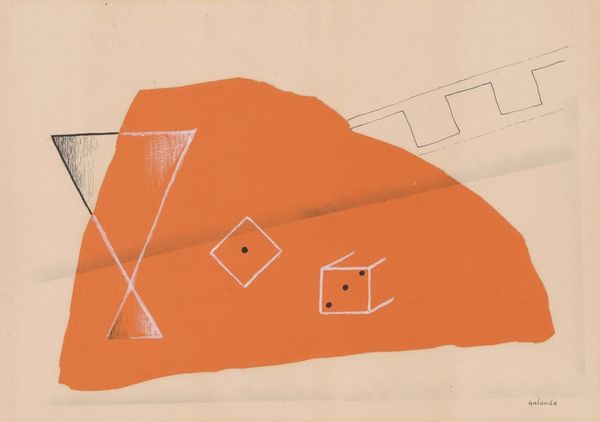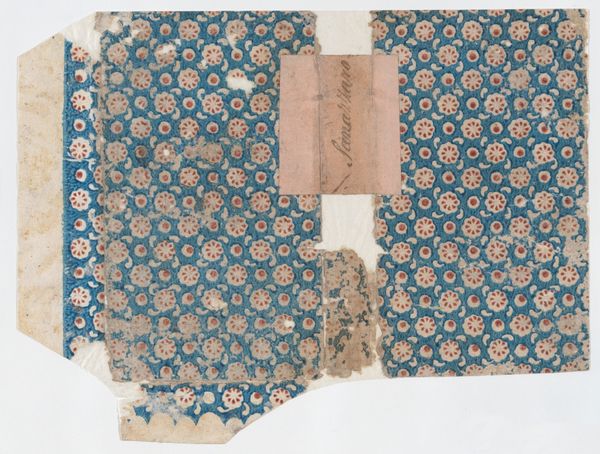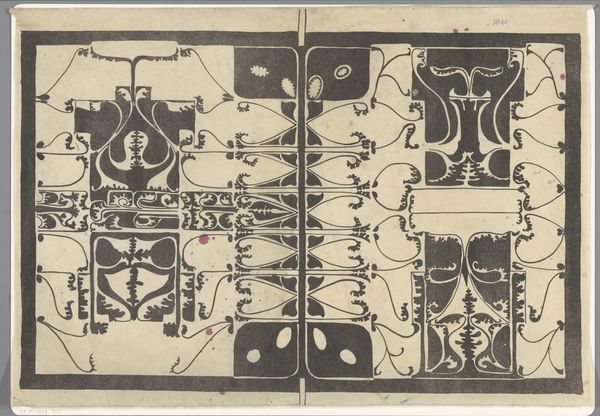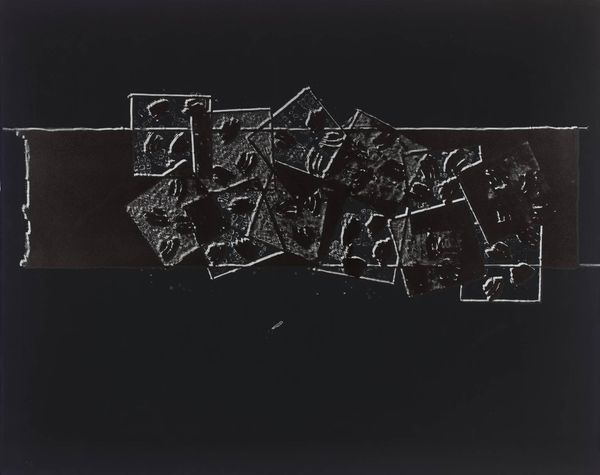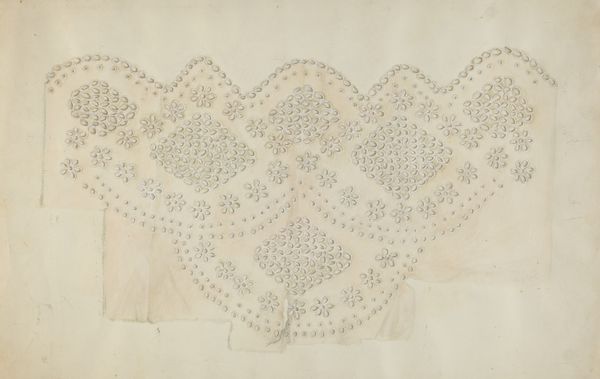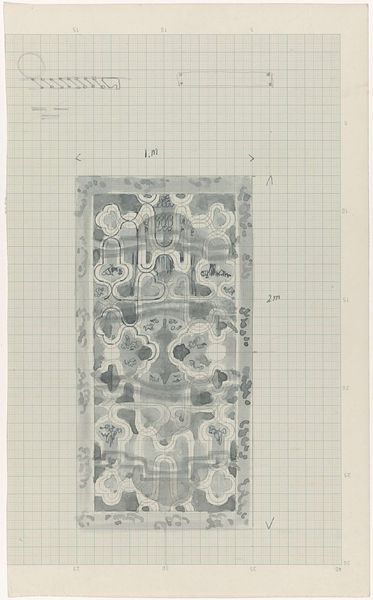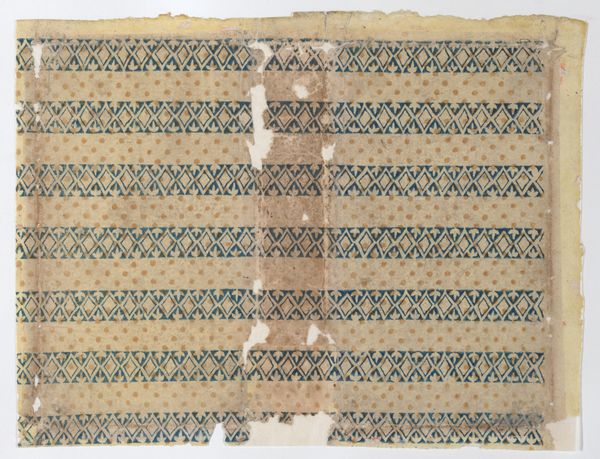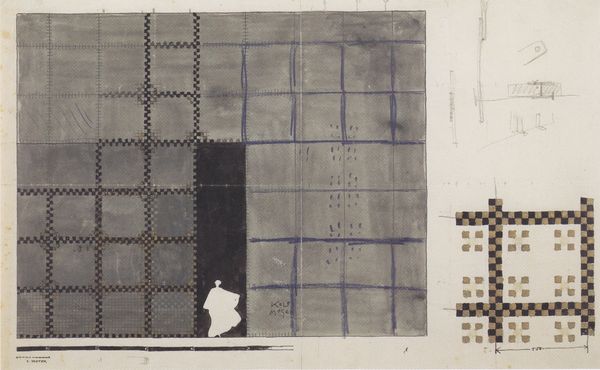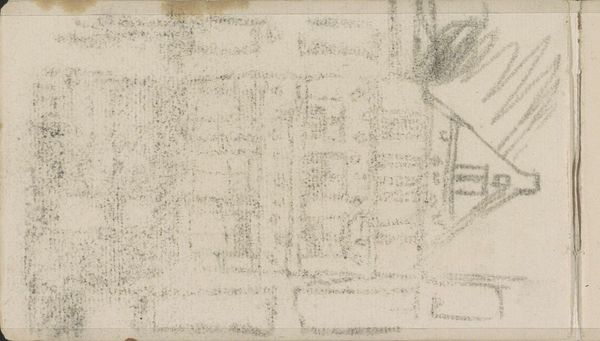
Dimensions: support: 2667 x 3822 mm
Copyright: © Fondazione Merz | CC-BY-NC-ND 4.0 DEED, Photo: Tate
Curator: Fibonacci Tables by Mario Merz. I find it so visually arresting, almost dreamlike. What do you make of the composition? Editor: The arrangement is certainly unusual. We have these groupings of tables, each set with what appear to be skulls or masks, illuminated by neon Fibonacci numbers. It reads as a commentary on growth, both mathematical and perhaps societal. Curator: Precisely. Merz, a key figure in Arte Povera, frequently employed the Fibonacci sequence to represent the organic expansion of the universe and the cyclical nature of life. The tables could signify communities or gatherings. Editor: The Arte Povera movement's focus on humble materials really comes through. The sheer scale of the canvas, combined with the rawness of the application, creates a sense of immediacy. Curator: His use of neon alongside these rudimentary images of tables adds a layer of tension, a dialogue between the natural and the artificial. Are we, as a society, evolving naturally, or are we being forced into predetermined configurations? Editor: An important question to consider, especially within our current political landscape. It seems Merz really made us think about what is meaningful. Curator: A powerful message indeed.
Comments
Join the conversation
Join millions of artists and users on Artera today and experience the ultimate creative platform.
tate 6 months ago
⋮
Merz was fascinated by the number series named after the medieval Italian mathematician Fibonacci. This system (originally applied to the understanding of reproduction in rabbits) extends infinitely so can be seen to correspond to proliferation in nature. The numbers increase by the addition of each preceding pair, for example, 1 1=2 1=3 2=5. Here images of increasingly large tables are linked in a spiral, neon numbers on each following the Fibonacci system, with glasses drawn on each table corresponding to these numbers, suggesting an infinitely increasing number of diners. Gallery label, January 2016


